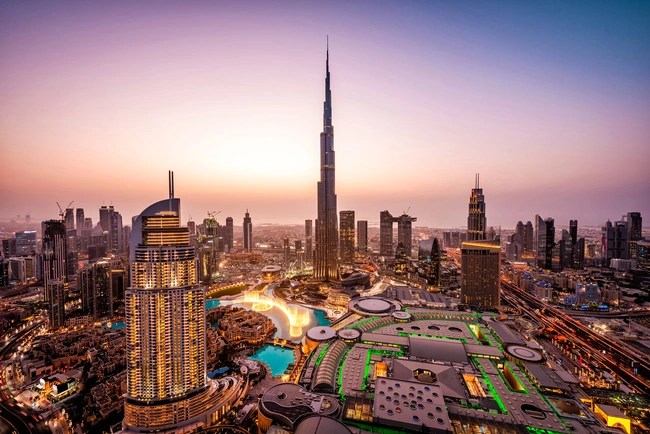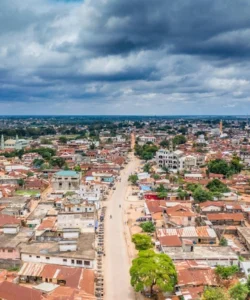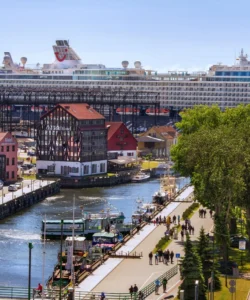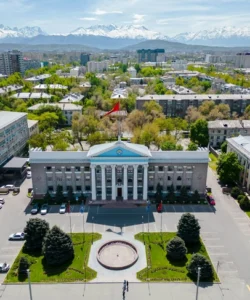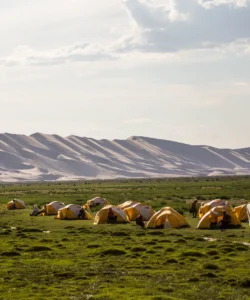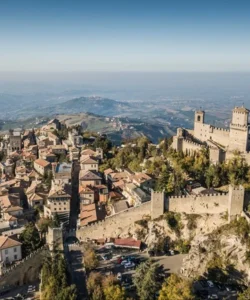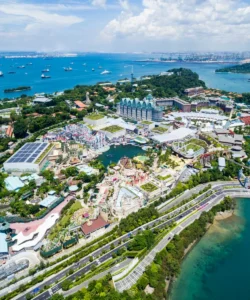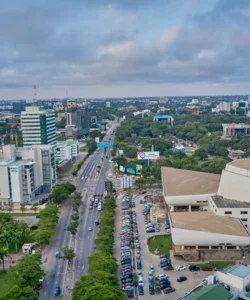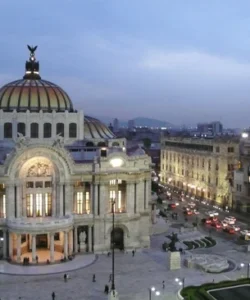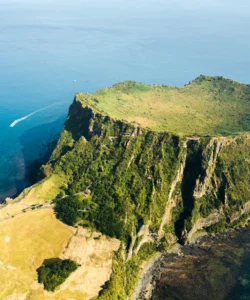The United Arab Emirates (UAE) is a federation of seven emirates: Abu Dhabi, Dubai, Sharjah, Ajman, Umm Al-Quwain, Fujairah, and Ras Al Khaimah. It is known for its rapid development, modern infrastructure, and status as a global trade and tourism hub.
![]()
Area: Approximately 71,024 square kilometers (27,422 sq mi).
Population: As of June 2025, the population is estimated at 11.35 million. The majority of the population (around 88.50%) are expatriates, with Emiratis making up about 11.50%. The urban population accounts for about 88.10% of the total.
Language:
- Official Language: Arabic (Modern Standard Arabic is the official dialect, with most native Emiratis speaking a dialect of Gulf Arabic).
- Other Widely Spoken Languages: English, Urdu, Malayalam, Hindi, Bengali, Farsi, Mandarin, Nepali, Russian, Sinhalese, and Tagalog. English is very widely used, especially in business and tourism.
Currency:
- The official currency is the Emirati Dirham (AED).
- In March 2025, the Central Bank of the UAE introduced a new symbol for the Dirham, inspired by the English name “dirham” and featuring two horizontal lines symbolizing stability and echoing elements of the UAE flag.
Religion:
- Islam is the official religion of the UAE.
- The country promotes tolerance and allows other religions to practice freely, with various places of worship available for non-Muslim communities.
Capital:
- Abu Dhabi is the capital city of the United Arab Emirates. It is also the largest and wealthiest of the seven emirates.
Major Cities:
- Dubai: The most populous city, known for its iconic skyscrapers, luxury shopping, and vibrant nightlife.
- Abu Dhabi: The capital, a major financial, industrial, and cultural hub.
- Sharjah: Known as the “Cultural Capital of the Arab World” by UNESCO, with a focus on arts and heritage.
- Al Ain: Located in the Eastern region of Abu Dhabi, known for its oases and historical sites.
- Ajman: The smallest emirate, featuring white sandy beaches.
- Ras Al Khaimah: The northernmost emirate, offering mountains, deserts, and historical sites.
- Fujairah: Located on the east coast, known for its beaches and the Hajar Mountains.
- Umm Al Quwain: The second smallest emirate, with a focus on traditional Emirati life.
Attractions & Wonders:
The UAE boasts numerous world-renowned attractions:
- Burj Khalifa (Dubai): The tallest building in the world, offering breathtaking panoramic views.
- The Dubai Mall (Dubai): One of the world’s largest shopping malls, featuring the Dubai Aquarium & Underwater Zoo and the Dubai Ice-Rink.
- Palm Jumeirah (Dubai): An iconic artificial archipelago shaped like a palm tree.
- Sheikh Zayed Grand Mosque (Abu Dhabi): A magnificent architectural masterpiece, one of the largest mosques in the world, with stunning white marble and intricate designs.
- Yas Island (Abu Dhabi): A leisure and entertainment hub home to Ferrari World (featuring the world’s fastest roller coaster), Yas Waterworld, and Warner Bros. World Abu Dhabi.
- Louvre Abu Dhabi (Abu Dhabi): A renowned art and civilization museum with a unique domed architecture.
- Museum of the Future (Dubai): A landmark showcasing innovative technologies and ideas for the future.
- Burj Al Arab Jumeirah (Dubai): An iconic sail-shaped luxury hotel.
- Global Village (Dubai): A multicultural festival park offering shopping, entertainment, and dining from around the world.
- Dubai Fountain (Dubai): The world’s largest choreographed fountain system.
- Jebel Jais (Ras Al Khaimah): The UAE’s highest mountain, offering stunning views and the world’s longest zipline.
- Hatta (Dubai): A mountain exclave known for outdoor adventures like kayaking, hiking, and its heritage village.
- Fujairah Fort: One of the oldest forts in the UAE, dating back to 1670.
Architecture:
The UAE’s architecture is a fascinating blend of traditional Islamic and Bedouin influences with ultra-modern, futuristic designs.
- Traditional Architecture: Historically, buildings utilized locally available materials like palm fronds (arish), mud bricks, coral, and stone. Wind towers (Barjeels) were a common feature for natural cooling.
- Modern Architecture: The UAE is a showcase for groundbreaking contemporary architecture, characterized by towering skyscrapers, innovative designs, and luxurious structures. Iconic examples include the Burj Khalifa, the sail-like Burj Al Arab, and the geometrically complex Louvre Abu Dhabi.
Roads:
The UAE has an extensive and well-maintained road network connecting its cities and emirates. Highways are multi-laned and designed for high speeds, making inter-emirate travel efficient.
Hotels:
The UAE is renowned for its luxurious and diverse hotel landscape, ranging from opulent five-star resorts to boutique hotels and budget-friendly options. Dubai and Abu Dhabi, in particular, are known for their high concentration of world-class hotels, including iconic properties like the Burj Al Arab, Emirates Palace, and numerous international hotel chains.
Restaurants & Cuisine:
The culinary scene in the UAE is incredibly diverse, reflecting its multicultural population.
- Emirati Cuisine: Traditional Emirati food emphasizes rice, meat (lamb, mutton, occasionally camel), fish, dates, and aromatic spices like saffron, cardamom, and turmeric.
- Popular Dishes:
- Machboos: A fragrant rice dish with meat or fish, similar to biryani.
- Harees: A hearty dish made with wheat and meat, slow-cooked to a porridge-like consistency.
- Thareed: A stew with meat and vegetables served with bread.
- Balaleet: A sweet and savory vermicelli dish, often served for breakfast.
- Luqaimat: Sweet, deep-fried dough balls drizzled with date syrup.
- Khameer: Traditional Emirati flatbread, often served with cheese or honey.
- Beverages: Arabic coffee (Gahwa) served with dates is a customary welcome. Camel milk, various teas, and fresh juices are also popular. Alcohol is generally available in licensed hotel restaurants and bars.
- Popular Dishes:
- International Cuisine: Due to its large expatriate population and status as a global hub, the UAE offers an unparalleled variety of international cuisines, from fine dining establishments by celebrity chefs to casual eateries, food trucks, and a vibrant street food scene.
Annual Travel:
The UAE is a year-round travel destination, though the cooler months (October to April) are generally preferred for outdoor activities due to lower temperatures. Major events, festivals, and conferences throughout the year also attract a significant number of tourists and business travelers.
